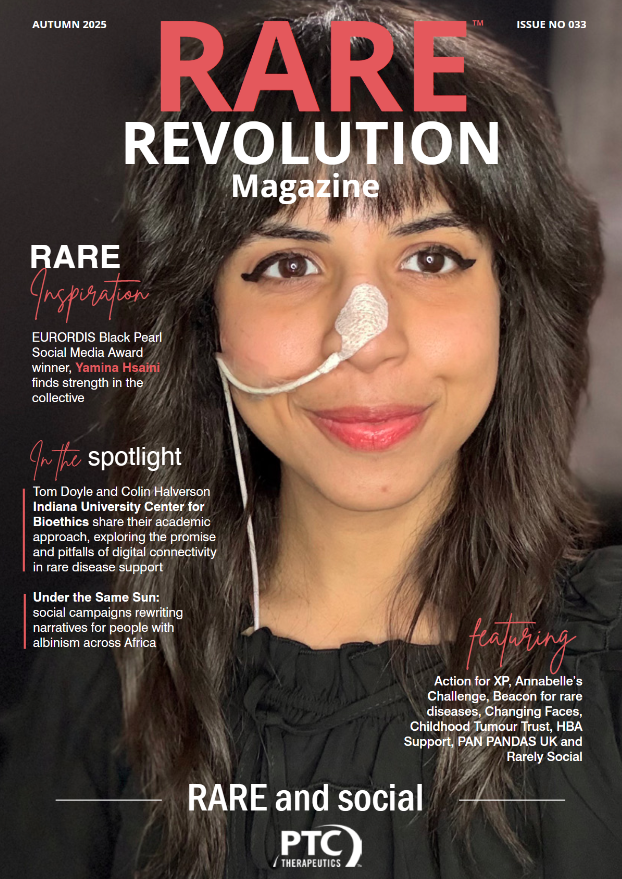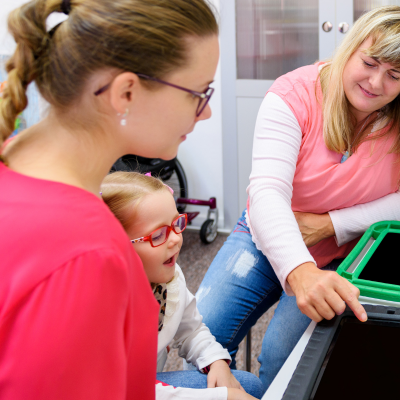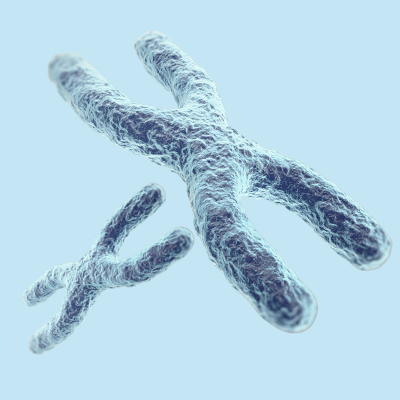Monitoring disease progression in Rett syndrome: the challenge of consensus
FUNDED BY ACADIA PHARMACEUTICALS GMBH

Despite advances in the understanding of Rett syndrome, there remains a lack of consensus on how best to monitor disease progression. This challenge stems from the condition’s clinical variability, differences in healthcare settings, and the absence of universally adopted tools and metrics. Victor Soto Insuga, neuro-paediatrician on behalf Elena González-Alguacil coordinator at the Rett Syndrome, Multidisciplinary Unit, Madrid, Spain shares his thoughts with supporting insights from clinical geneticist, Professor Siddharth Banka and Becky Davis, president of Rett Syndrome Europe
Written by Nicola Miller, RARE Revolution
Interview with
Dr. Victor Soto Insuga , Neuro-paediatrician, PhD Child Neurology. Hospital Niño Jesús
Additional insights from
Professor Siddharth Banka, clinical geneticist, professor of genomic medicine and rare disease, Manchester University,
director of Manchester Rare Condition Centre and lead consultant, Rett syndrome specialist clinic, Manchester, and
Becky Davis, trusts and foundations officer, Rett UK and president, Rett Syndrome Europe
Accurately monitoring disease progression in Rett syndrome presents significant challenges for clinicians and families alike. The disorder’s heterogeneity, the lack of reliable biomarkers, and the limitations of existing assessment tools along with limited clinical contact, all contribute to the complexity of tracking changes over time, meaning disease progression monitoring is often fragmented and lacks consensus.
One of the primary difficulties is the variability in how Rett syndrome presents and progresses among patients. As Dr. Victor Soto Insuga explains, “The heterogeneity of Rett syndrome means the progression of the disease is different between each patient.” He further notes, “We have no defined biomarkers that say, ‘this girl will progress in this way, or at this rate—this is a big problem.”
Another challenge is the infrequency of clinical assessments. In some countries, patients may only be seen once every few years, making it difficult to capture subtle or rapid changes. As clinical geneticist, Siddharth Banka explains, “In our specialist clinic, we see both children and adults. Younger children might come for an appointment every two to three years with more frequent review in local paediatric or neurology clinics perhaps six monthly to yearly. Older individuals are maybe only seen in our clinic every five years. Unfortunately, we cannot see them more frequently due to capacity. This means that much of the ongoing assessment is left to local providers, leading to variability in practice.”
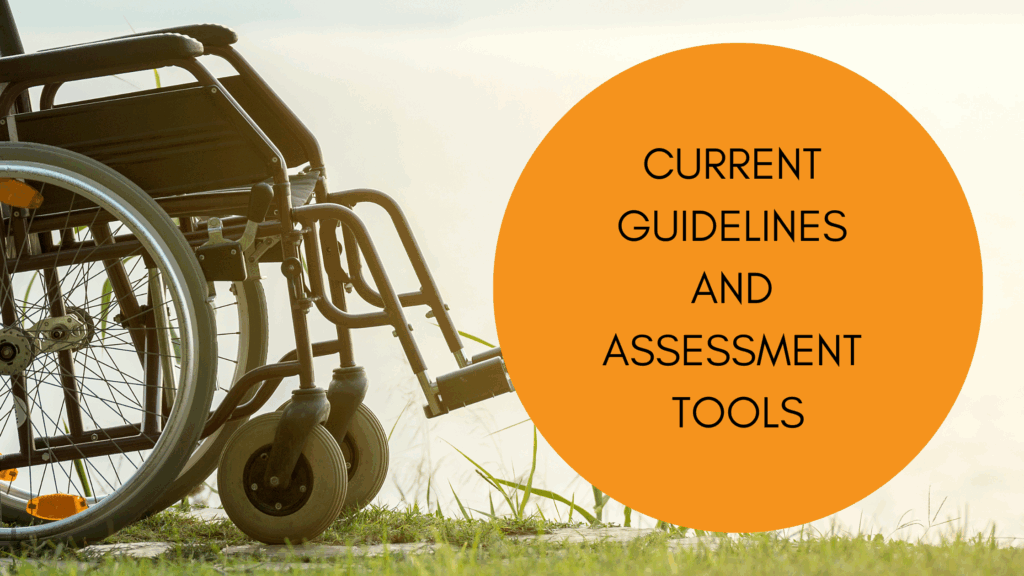
Several standardised tools and guidelines are used to monitor Rett syndrome progression. Victor describes, “The CGI (clinical global impression) scale is an important scale that we use. Then there are some specific comorbidities, like sleep disturbance where we use the ESS (Epworth Sleepiness Scale). Both are valuable to us.” Despite the availability of these tools, significant limitations remain. Many scales are clinician-derived and may not reflect real-world function or quality of life. Victor emphasises, “The majority of these scales, not only in Rett, but in other developmental epileptic encephalopathies, have been made in a unilateral way—by clinicians and academics—but we know that these scales really do not reflect the reality of these patients.”
Guidelines do exist—such as those from Rett UK—but Siddharth notes, “at least in our clinic, we share those guidelines with the family and with the clinicians of those patients, and we hope that individuals are followed up as using those guidelines, but there’s no mechanism, as far as I’m aware, to audit how accurately these reviews follow this guide or report back findings.” This lack of audit and standardisation means that the application of tools and scales can be inconsistent.

Victor further explains that subtle but meaningful changes are often missed: “If a girl improves with some intervention, the scales often do not reflect this change. The parents are reporting the change, but if you use only these scales, the results are not going to reflect these changes.” Victor also points out the difficulty in distinguishing between symptoms, which can lead to misdiagnosis: “Sometimes it’s very difficult to distinguish between seizures or non-epileptic diseases like movement disorders or hyperventilation—the percent of misdiagnosis is very high—it is one of the most important problems when we compare different patients. There lacks consistency in reporting of these symptoms, therefore the natural history may not be accurate.”
When it comes to cognitive function, the challenge is even greater. Siddharth admits, “Beyond any sort of community paediatrician’s assessment of development, I don’t think most patients, at least in the adult services, are assessed regularly for cognitive impairment, and that’s true for many rare diseases affecting neurodevelopment. The level of assessments done in paediatrics versus in adulthood is also vastly different.” This gap leaves families and clinicians without clear metrics to track cognitive changes over time. Monitoring cognitive progression in patients with Rett syndrome is particularly challenging due to profound communication barriers and the limitations of existing assessment tools. Many patients are unable to speak or use their hands effectively, making traditional cognitive testing methods impractical. As Victor explains, “We have to understand that we observe the patient for only 30-60 minutes in a clinical setting, not in their home environment—so we must take time to confide in clinical history observed by parents.”
While technologies such as eye-tracking and cognitive evoked potentials (CEPs) offer some promise, these are often used primarily for research rather than routine clinical monitoring. Consequently, clinicians must rely heavily on caregiver observations and subjective reports, further complicating the accurate assessment of cognitive progression in this population.
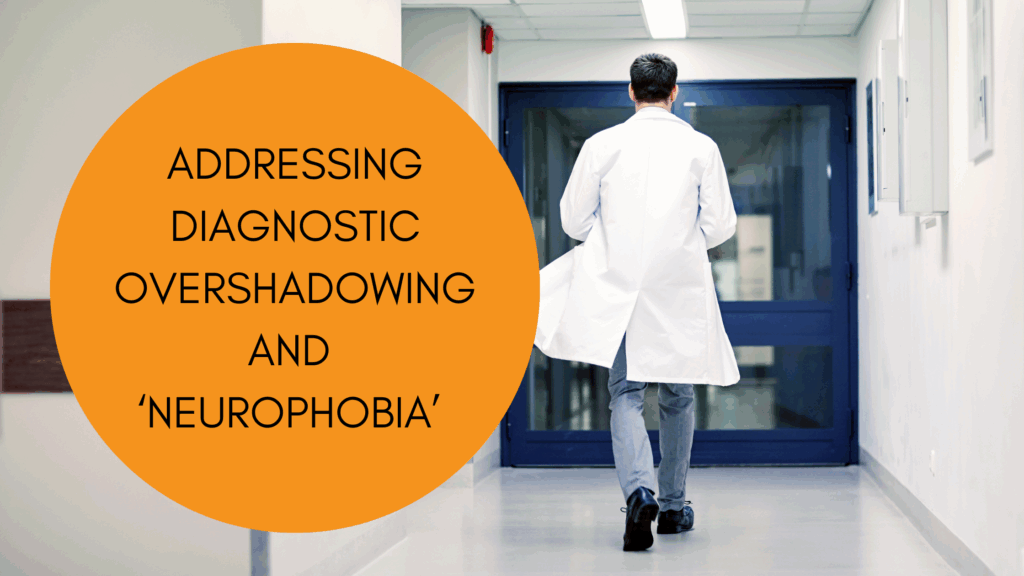
Diagnostic overshadowing—where all symptoms are attributed to a primary diagnosis (in this case Rett syndrome)—and neurophobia, the reluctance of clinicians to engage with neurological conditions, present significant barriers to comprehensive care and tracking. As Victor explains, “We have to fight against this belief that everything that happens medically to these children is due to Rett syndrome.”
Becky Davis, president of Rett Syndrome Europe, describes further this challenge: “This is a significant challenge for us. As default, healthcare professionals often label any health issues as ‘Rett related’. There is a strong tendency to put everything down to Rett. But individuals are not immune to other health related issues like diabetes, gallbladder disease or even cancer.” Becky has seen this with her own daughter Rosie, where she has had to fight for adequate investigation into health issues.
This tendency to dismiss symptoms as “just Rett” can have serious consequences. When new symptoms are not properly investigated, underlying conditions may go undiagnosed and untreated, leading to poorer health outcomes. It also places “additional burden on families”, who as Becky explains must be vigilant and knowledgeable enough to identify when—”actually, no this doesn’t feel like this is Rett related”. But it is not just the impact on overall health that needs to be highlighted. This overshadowing is detrimental in accurate disease tracking. By grouping all symptoms together and presenting them as ‘Rett related’ it can significantly distort the reported picture of this disease.
Victor is clear that, “A key step in overcoming neurophobia is to provide targeted education and training for general paediatricians and non-specialist clinicians.” By increasing awareness of Rett syndrome’s complexity and its associated comorbidities, clinicians can gain the confidence to manage routine and non-neurological issues, rather than deferring all care to specialists.
The creation and dissemination of clear, practical guidelines is also essential. Victor emphasises, “We must give clear guidelines to distinguish between what is epilepsy—what is not epilepsy— what is a gastrointestinal problem, and so on.” Such guidelines can help clinicians differentiate between symptoms directly related to Rett syndrome and those that may be due to other treatable conditions. Victor expands, “Clinicians should be encouraged to perform thorough assessments for each presenting symptom, considering both Rett-related and unrelated causes. This approach helps avoid the pitfall of attributing all health issues to Rett syndrome and ensures that treatable conditions are not overlooked.”
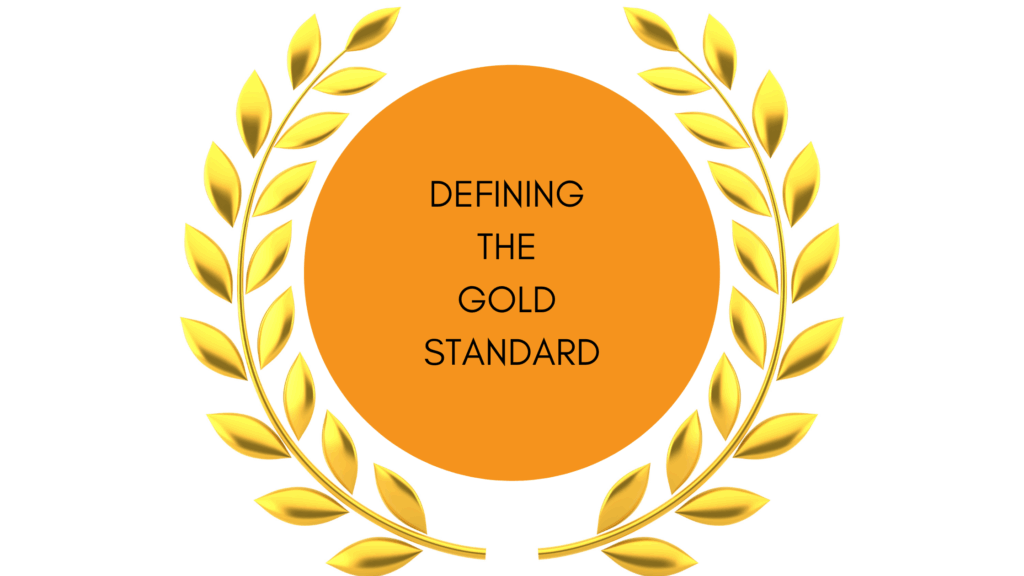
The gold standard for monitoring disease progression in Rett should be a multidimensional approach that captures the full spectrum of patient experience—both clinically and in daily life. A truly effective system must integrate input from clinicians, caregivers, educators, and—where possible—the patients themselves. Victor highlights the limitations of current clinician-only assessments: “We need scales that incorporate the views of all—if we talk about quality of life, we cannot use scales made only by clinicians.” Caregivers, who observe patients in their natural environments, are uniquely positioned to notice subtle changes in function and quality of life that may not be apparent during brief clinical visits. It is therefore imperative that caregivers are empowered to play a crucial role in the monitoring and reporting on their loves ones health.
Among emerging tools, the Rett Syndrome Behaviour Questionnaire (RSBQ) stands out as useful validated instrument for assessing behavioural and functional changes. The RSBQ is unique, in that, it is designed to be a caregiver completed assessment—validated for both children and adults. This versatile tool captures insights on a range of subscales for features such as breathing difficulties, mood, nighttime behaviours and emotional regulation, allowing clinician to see trends in symptom clusters.
Victor points out that, looking to the future, “The gold standard should include technology-enabled assessments”—such as video analysis, eye-tracking, and wearable devices—to objectively monitor subtle changes in behaviour, cognition, and daily function. These innovations, combined with regular, structured caregiver input, would ensure that both clinical and lived experiences are fully represented—leading to more accurate and responsive care. Tools that support ongoing communication are also important and support shared decision-making and continuous learning.
In the absence of clear biomarkers with Rett syndrome, progression monitoring should be an integrated, real-world, and patient-centered system. It must combine validated clinical scales with caregiver and educator input and leverage technological advances to capture the nuances of daily life. By implementing these strategies health teams can reduce the impact of diagnostic overshadowing and neurophobia, while combatting the existing challenges to disease monitoring.
Only by embracing this multidimensional approach can we ensure that assessments have clinical consensus and truly reflect the lived experience and needs of individuals with Rett syndrome and their families.
- RSBQ (Rett Syndrome Behaviour Questionnaire): A caregiver-completed assessment tool designed to measures behavioural symptoms within Rett syndrome1,2,3
- CGI (Clinical Global Impression) scale: a clinician-administered 7-point rating scale used to assess the overall severity of a patient’s illness and any response to treatment where applicable.
- ESS (Epworth Sleepiness Scale): A widely adopted scoring method using in instances of sleep disorders, to assess sleep quality by a spectrum of sleepiness during difference activities
- CEPs (cognitive evoked potentials): electrical signals generated by the brain in response to planned stimuli, used as a tool to assess higher-order cognitive functions. Particularly useful in assessing individuals who are non-verbal
References
[1] A review of the Rett Syndrome Behaviour Questionnaire and its utilization in the assessment of symptoms associate with Rett syndrome/DOI: 10.3389/fped.2023.1229553
[2] The Rett Syndrome Behaviour Questionnaire (RSBQ): refining the behavioural phenotype of Rett syndrome/ Journal of Child Psychology and Psychiatry 43.8 (2002), pp 1099-1110
[3] Rett Syndrome Behaviour Questionnaire: Variability of Score and Related Factors/ Journal of Child Psychology and Psychiatry DOI: 10.1089/cap.2024.0128
Articles within this digital spotlight are for information only and do not form the basis of medical advice. Individuals should always seek the guidance of their medical team before making changes to their treatment.
This digital spotlight has been made possible with financial support from Acadia Pharmaceuticals GmbH. They have had no editorial control over the copy, and all opinions are those of the contributor.
RARE Revolution Publishing® retains all copyright.
